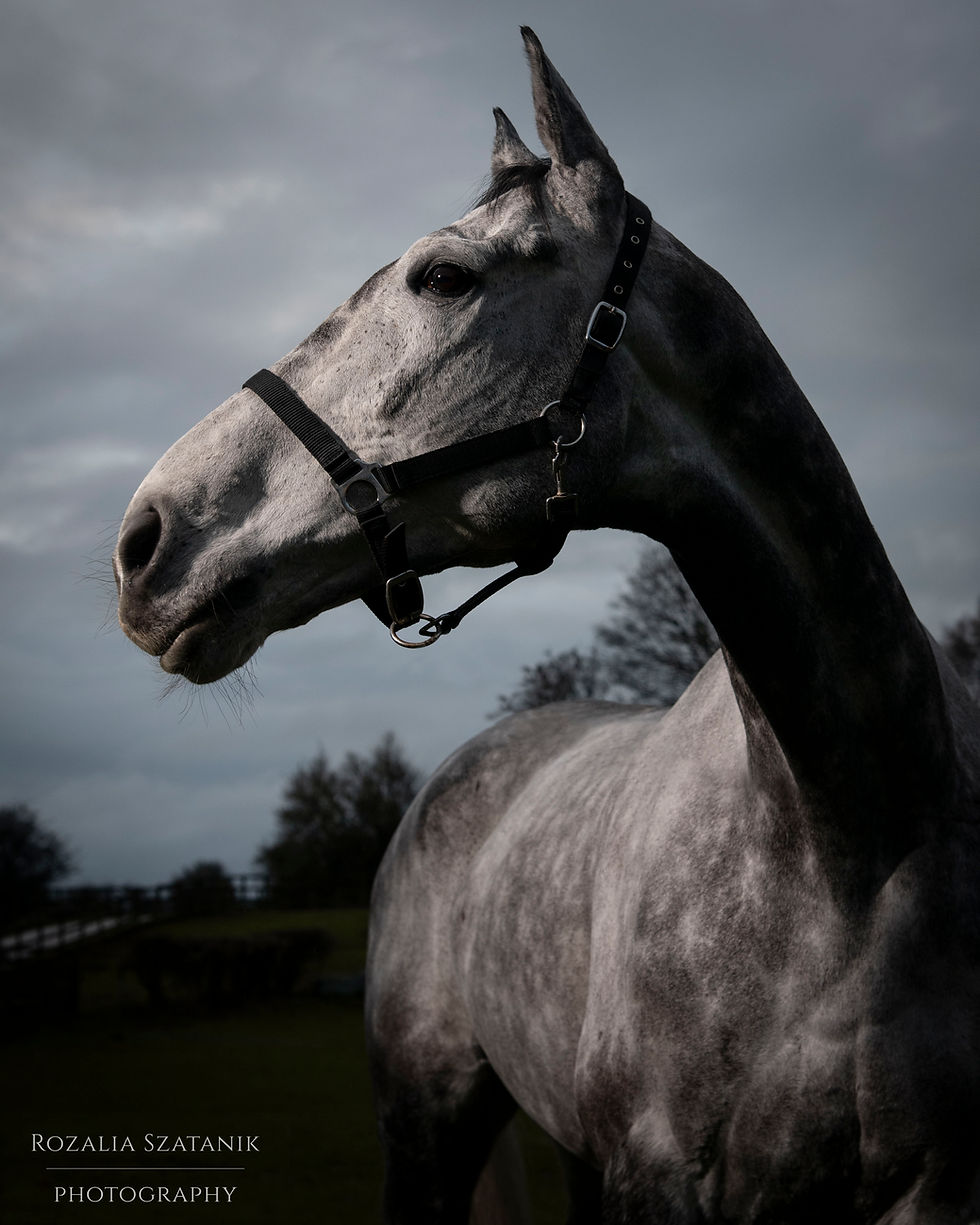Improve your horse photos
- rozaliaszatanik
- Jan 24, 2022
- 3 min read
Updated: Jan 27, 2022
If you enjoy taking photos of horses, but would like to improve your technique, this blog is for you!

Horses are beautiful creatures and are very enjoyable to photograph. Occasionally though, this stunning horse we see in front of us might end up looking out of proportion, unbalanced or bored in our images. Professional photographers spend a lot of time learning how to capture the horse to make it look its best in photos, and I’m about to share a few tips so you can learn as well.
This might also be handy for your friend or partner who will be photographing you at your next ride or show!
1. HORSE IN MOTION (loose or ridden)
Horses generally move in walk, trot, canter or gallop, and each gait has a phase which looks most attractive in photos. Here we'll only focus on the first three, as they are most common.

Walk is the least expressive of movements, and many photographers simply don’t photograph it. But this doesn’t mean that it can’t be photographed well! Try to capture the horse just as it’s front leg is lifted and about to straighten, but before landing on the ground. At this point the front of the horse lifts and its back leg should be under the body, producing a nice shape overall.

Trot has a wonderful rhythm to it and once you tune in to that rhythm, your photos will instantly get better!

Try to press the shutter the moment one front leg is extended forward, but before it touches the ground. Some horses have big movement and that moment is easy to capture, while some horses move quickly and don’t lift their legs as high, so it might take some practice to get the perfect shot. you’re looking for the horse’s legs to form a letter “M”.



Canter looks great in photos as you can really see the whole horses body working.

That being said, there are distinctive phases to each stride, and capturing the “wrong” one can make the horse look unbalanced or almost as if it’s falling forward. In canter you want to capture the horse as its front is lifted and both front legs are in front of the body - ideally creating a letter “P”, where one leg is straight and the other bent. Yet again, aim for the moment just before the straight leg touches the ground.
TOP TIP: Try photographing the horse side-on and at different angles to find which look you like best.



2. HORSES JUMPING

Whether it’s a little cross pole or a big cross country fence, we generally try to capture the horse in the air, so with all legs lifted off the ground. There are a few phases of the jump that look great in photos, so practise your timing to get them right each time!
First shot is when the horse lifts off the ground, just as it’s back legs stretch out and front legs are bent tightly above the fence.

Second moment, easier to capture over larger fences, is when the horses body is horizontal (or almost horizontal) over the top of the fence. This one is ok to get a little early, but try to not be late so the horses front isn’t heading downwards yet.
Third moment is most attractive over cross country fences, and looks great if there is water or a drop after the fence. Try to capture the horse stretched out for landing, but again, just before it touches the ground.
TOP TIP: Use a fast shutter speed (or a “sport” mode) to avoid motion blur.



3. EXPRESSIONS

In general, horses look best when they are calm but engaged with their surroundings, with ears forward, head lifted and looking around. Quite often horses who are in a familiar place will be very relaxed and look a little bored in photos, so try to get their attention or ask someone to help - you can click your tongue, move or make rustling noise with your clothes etc. Make sure that whatever you’re doing isn’t scaring the horse, as this could put both of you at danger.
TOP TIP: If photographing horses you don’t know (in a field for example), do not get near them and definitely do not try feeding them to get their attention. You could put yourself at danger or cause illness even if you think what you’re giving them is safe to eat. Please always be respectful of their space.

I hope this helps you take great photos of horses, and feel free to get in touch with questions or to show off your work!
Remember, these are just tips, not hard rules, and the most fun part of photography is experimenting and figuring out what works for you.
Enjoy!
Rozalia


Comentários